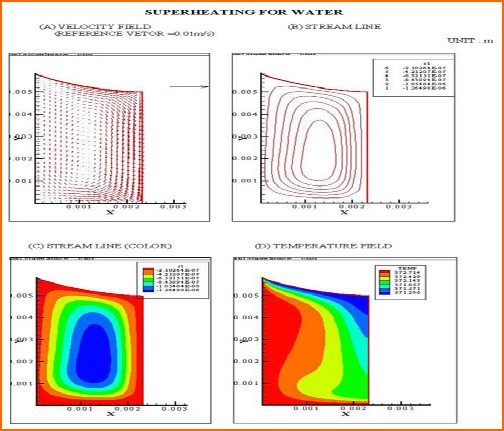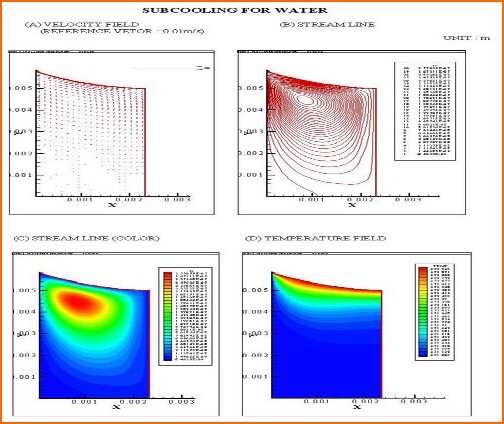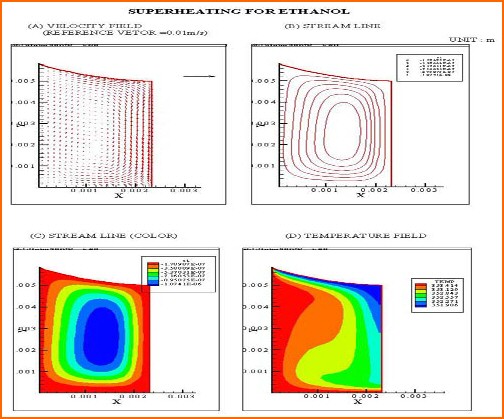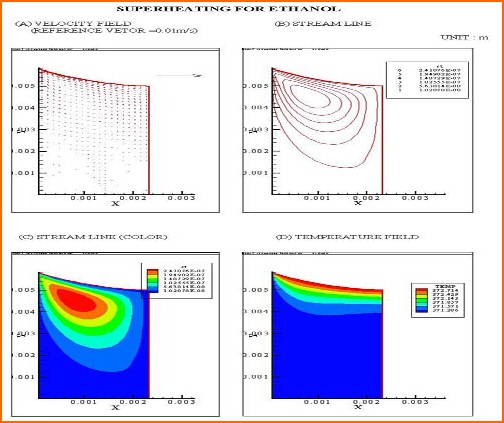![]()
Results
The calculated results for water and ethanol are shown.
For both liquids, opposite flow directions and different temperature
distribution are shown between superheating and subcooling cases.
For the superheating case of water, the
negative temperature gradient in the x-direction causes the clockwise
flow circulation. In other words, the surface tension near the center
of a meniscus surface is higher than one near the side wall because
the temperature of side walls is higher than near center of a meniscus
surface. This clockwise flow circulation convects heated liquid
from the side wall into the meniscus surface. Therefore, isotherms
are depressed into the meniscus surface. Returning flows at a center
region convects down the cool water, pulling down the isotherms
into the bottom.
For
the subcooling case of water, the positive temperature gradient
in the x-direction causes the counterclockwise flow circulation.
The returning cooled liquid from lower portion depressed upward
the isotherm. Compared with two different mode, circulation for
a superheating case is stronger than one for a subcooling case.
This is due to the overlap of buoyancy-driven flow and thermocapillary-driven
flow for a superheating case.
Similar profiles are obtained for ethanol
case, as shown in the attached figures. However, ethanol has larger
Marangoni number than water, and results in more circulations and
depression of isotherm.
|
|
|
|



